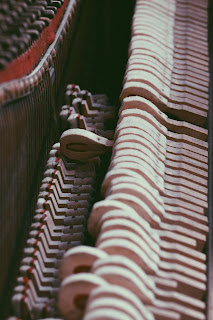Many people are not aware that humidity can have a profound effect on the tuning and performance of your piano. Humidity is a measure of how much water vapor is in the air, relative to the maximum amount of water vapor it can hold (that’s why it’s called relative humidity!). Your piano is subject to wide swings in humidity. This is parrly true in, while in the winter, your heating system can drop the relative humidity in your home into the single digits.
What does this mean for your piano? When the humidity is high, the soundboard and bridges absorb moisture and swell, increasing the tension of the strings and forcing the piano sharp. When the humidity is low, the opposite happens - the soundboard and bridges release moisture and shrink, reducing the downward pressure of the strings and forcing the piano flat. This is why almost all piano manufacturers - and your piano technician - recommend that your piano is tuned twice a year. In addition to forcing your piano out of tune, increased humidity affects the action parts, swelling the wood and increasing friction, which can make your action respond sluggishly (a major cause of “sticking” keys).
How can you mitigate the effects of humidity on your piano? There are several options. The absolute best solution is to have your whole house humidity controlled. This involves either attaching a humidifier to your HVAC system or installing a separate humidifier/dehumidifier system in your home. While this is the best solution, it can be very expensive to install and maintain, and is usually cost prohibitive.
The next, and we think best, solution is to install a humidity control system directly in your piano. The Dampp Chaser company, makers of the Piano Life Saver system, is the only company making these systems. Over the past 74 years they have perfected their system and adapted it to work in all pianos. This system maintains the relative humidity of your piano within a few percent of the ideal level of 45% Relative Humidity. A humidistat regulates the humidity, similar to the way your thermostat regulates temperature. If the humidity is high, the humidistat activates low power dehumidifier bars to dry out the piano. If the humidity is low, the humidistat activates a humidifier - a gentle version of that which you might put in a room. Periodically, you must fill the humidifier tank with water. This can be disconcerting the first few times, pouring water into a tube that disappears into your piano!
Get More Info : Piano Rebuilding Upstate New York
Website : https://www.newyorkpi anoworks.com/



